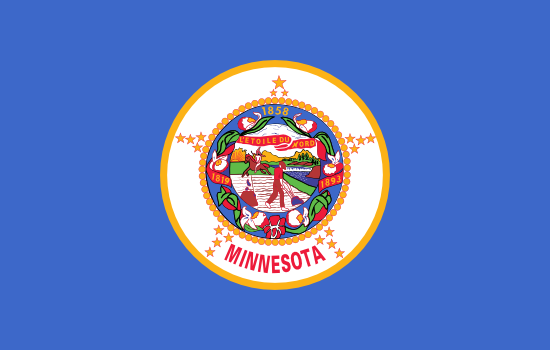
Minnesota
- Statehood Year:
- 1858
- Capital:
- St. Paul
- Largest Cities:
- Minneapolis, St. Paul, Rochester
- Abbreviation:
- MN
Minnesota is a state in the Midwest region of the United States, known for the Land of 10,000 Lakes and vast wilderness areas. It has a population of 5,833,250, making it the 22nd most populated state in the country. The capital city is St. Paul. Minnesota has a diverse economy with medical tech and agriculture focus.